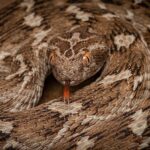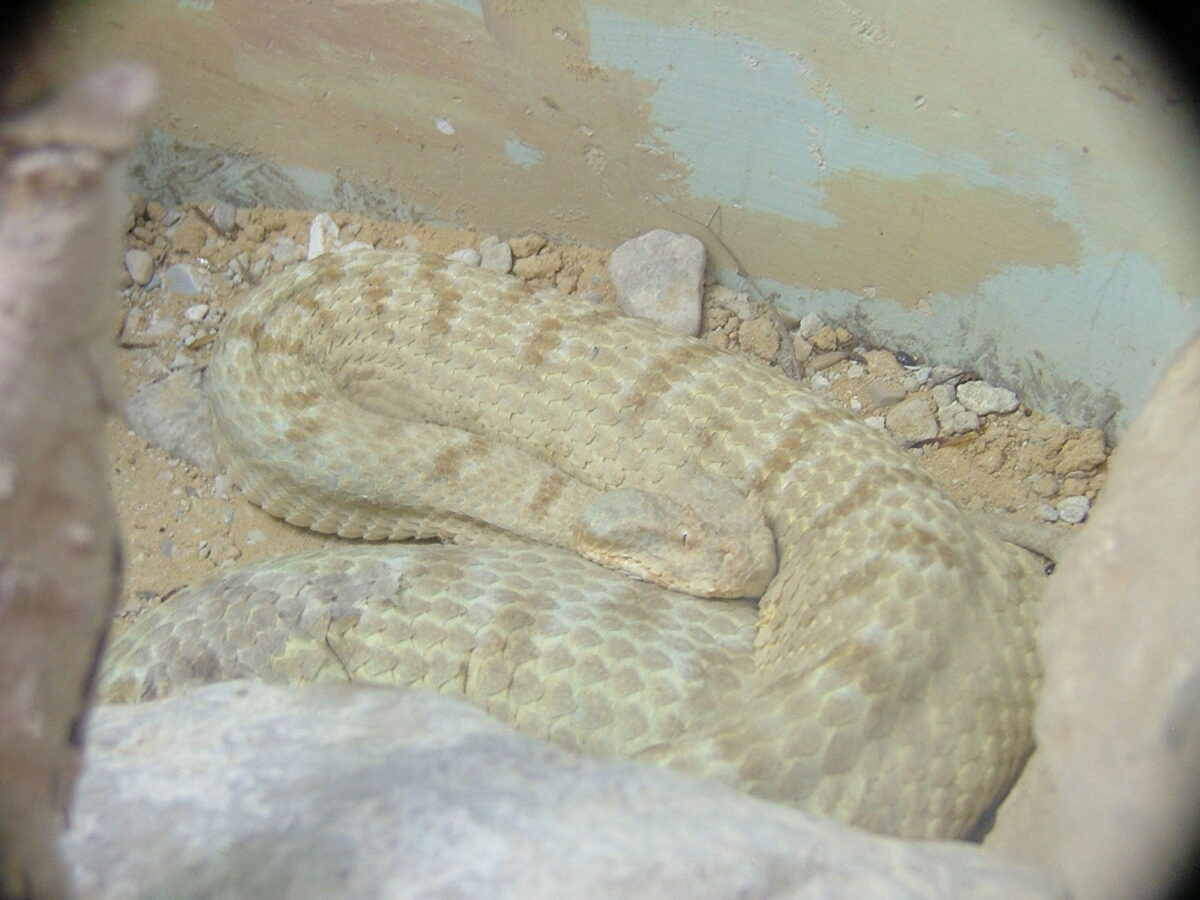

Scientific name
Species name
Body length
Weight
The Persian horned viper, scientifically known as Pseudocerastes persicus, is a venomous snake species belonging to the Viperidae family. The Persian horned viper is a medium-sized snake, typically measuring around 70 to 100 centimeters in length. It has a stout body and a distinct triangular-shaped head. One of its most notable features is the presence of horn-like scales above each eye, giving it its name. The coloration can vary, but they often have a sandy or brownish background with darker markings and patterns for camouflage.
The Persian horned viper is endemic to Iran and is found in various regions within the country, including deserts, rocky areas, and mountainous habitats. It inhabits arid and semi-arid regions, often with sparse vegetation.

Persian horned vipers are venomous, possessing venom that is potentially dangerous to humans. Their venom can cause local tissue damage, pain, swelling, and other systemic effects. However, they are generally not aggressive and will typically try to retreat or hide when confronted. Bites from these vipers are relatively rare but can occur if humans accidentally step on or disturb them.

Persian horned vipers are adapted to survive in arid environments and are often found in rocky or sandy habitats. They are primarily nocturnal, remaining hidden during the day and becoming active at night. These vipers are well camouflaged, relying on their pattern and coloration to blend with their surroundings.
Persian horned vipers primarily feed on small mammals, such as rodents, as well as lizards and other small vertebrates. They are ambush predators and use their camouflage and stealth to capture their prey.

